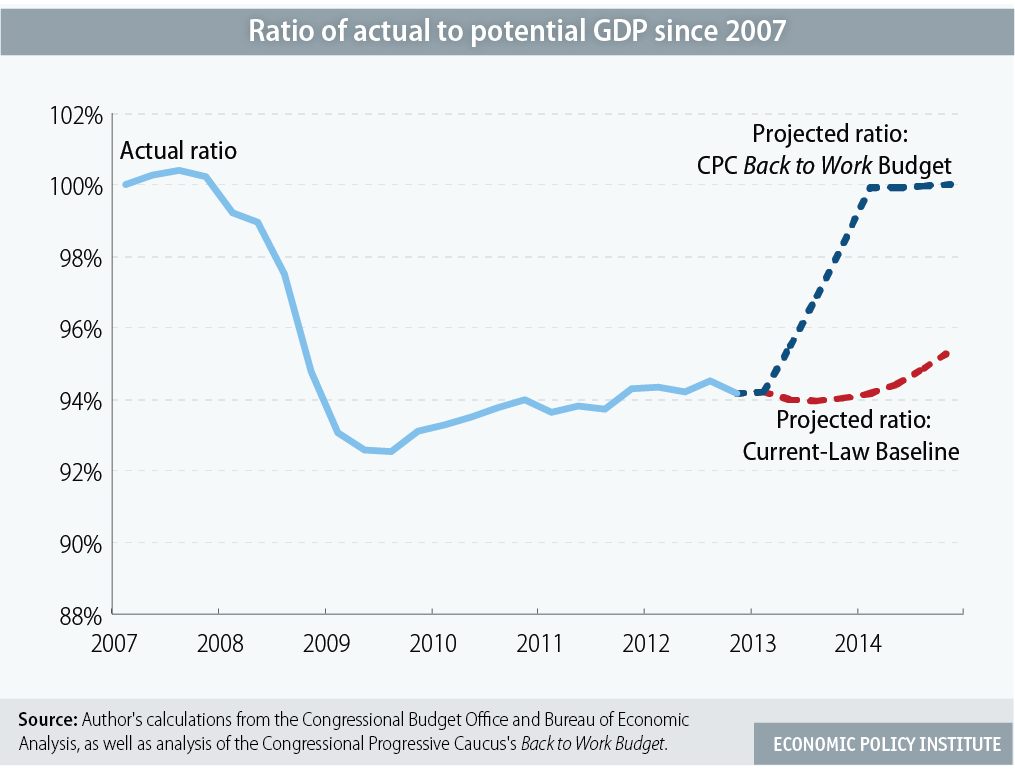The Congressional Progressive Caucus (CPC) released its Back to Work Budget last week. Its signature policy is the provision of large near-term fiscal support to ensure a full economic recovery from the Great Recession—a recovery that has yet to come. The figure below shows just how far the economy remains from full recovery five years after the beginning of the Great Recession, as well as how little progress would be made in generating recovery through the end of 2014 without substantial job-creating investments like those in the Back to Work Budget.
The lines show the ratio of actual gross domestic product (GDP) to potential GDP. Potential GDP is an estimate of how much the economy could produce if all productive resources—both labor and plant and equipment—were fully utilized. Today’s unemployment rate of 7.7 percent makes clear that these resources are not fully utilized. The wedge between actual and potential GDP is simply a shortfall of spending by households, businesses and government that keeps employers from hiring more workers to satisfy demand. And the Congressional Budget Office’s “current law” baseline, illustrated below by the red dotted line, shows this demand shortfall is projected to persist well beyond 2015 unless aggressive policy actions are taken to close it. The Back to Work budget rapidly restores this ratio of actual to potential GDP to its pre-recession levels. See EPI’s full analysis of the Congressional Progressive Caucus’ Back to Work budget.

